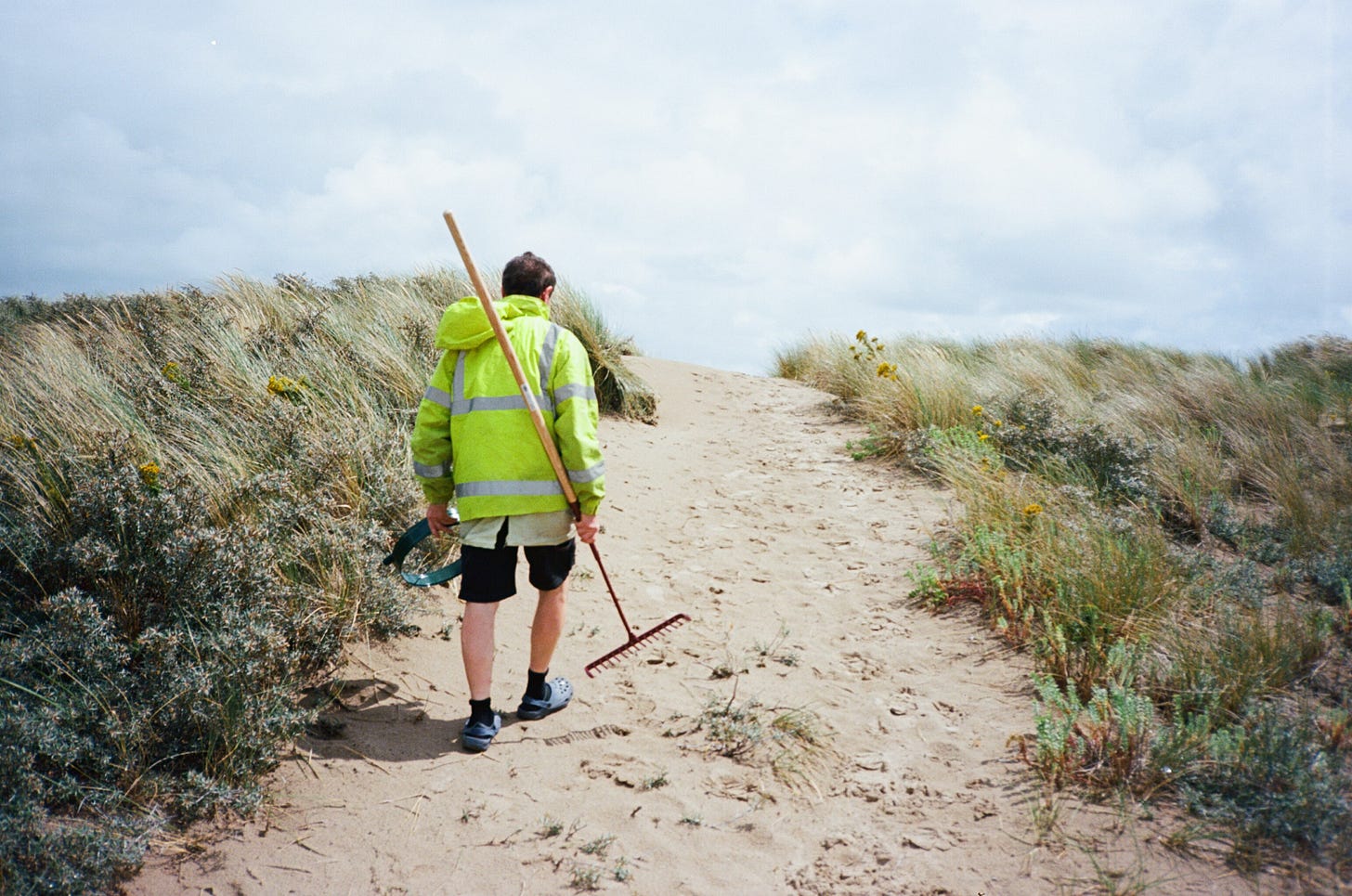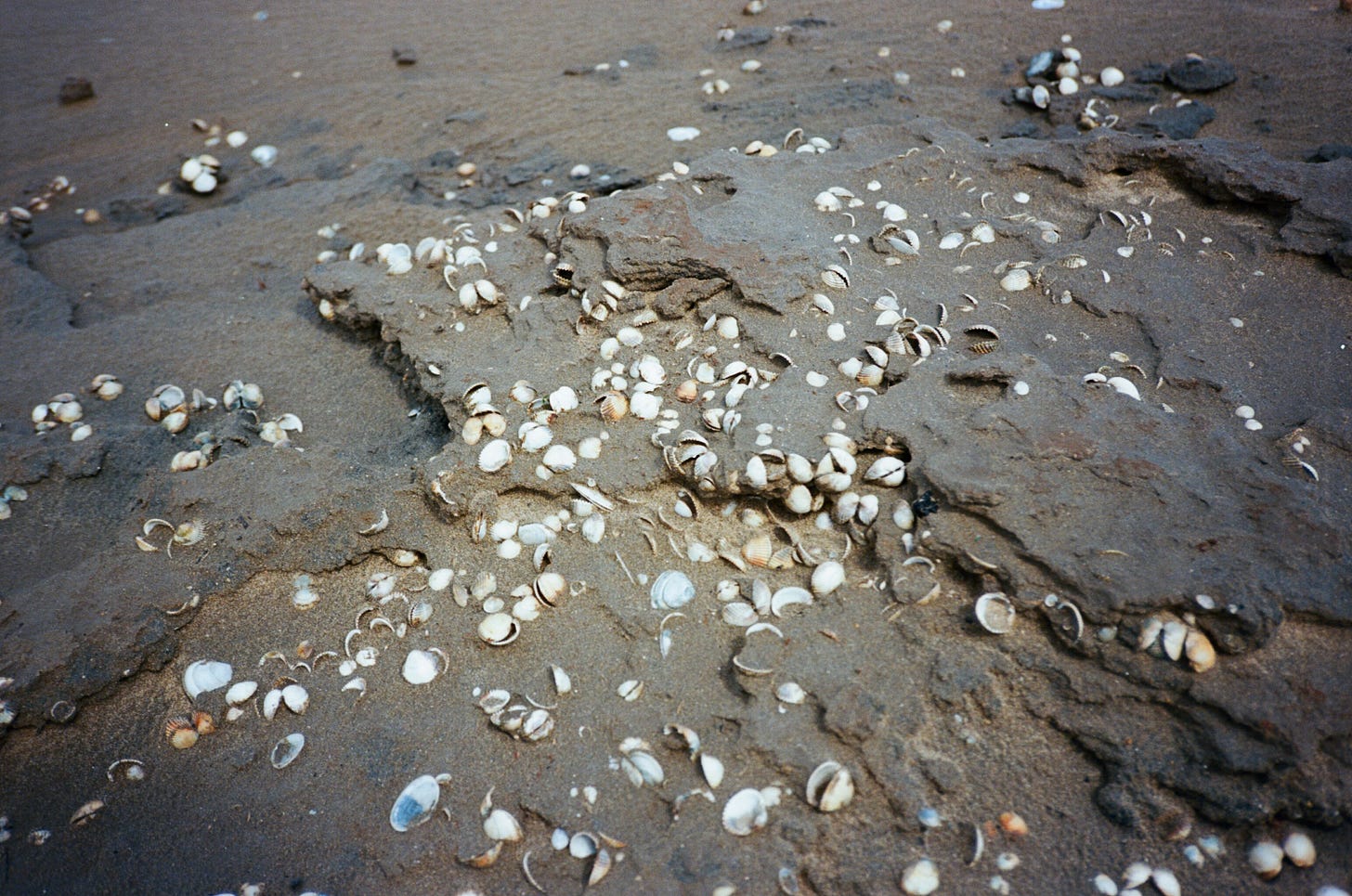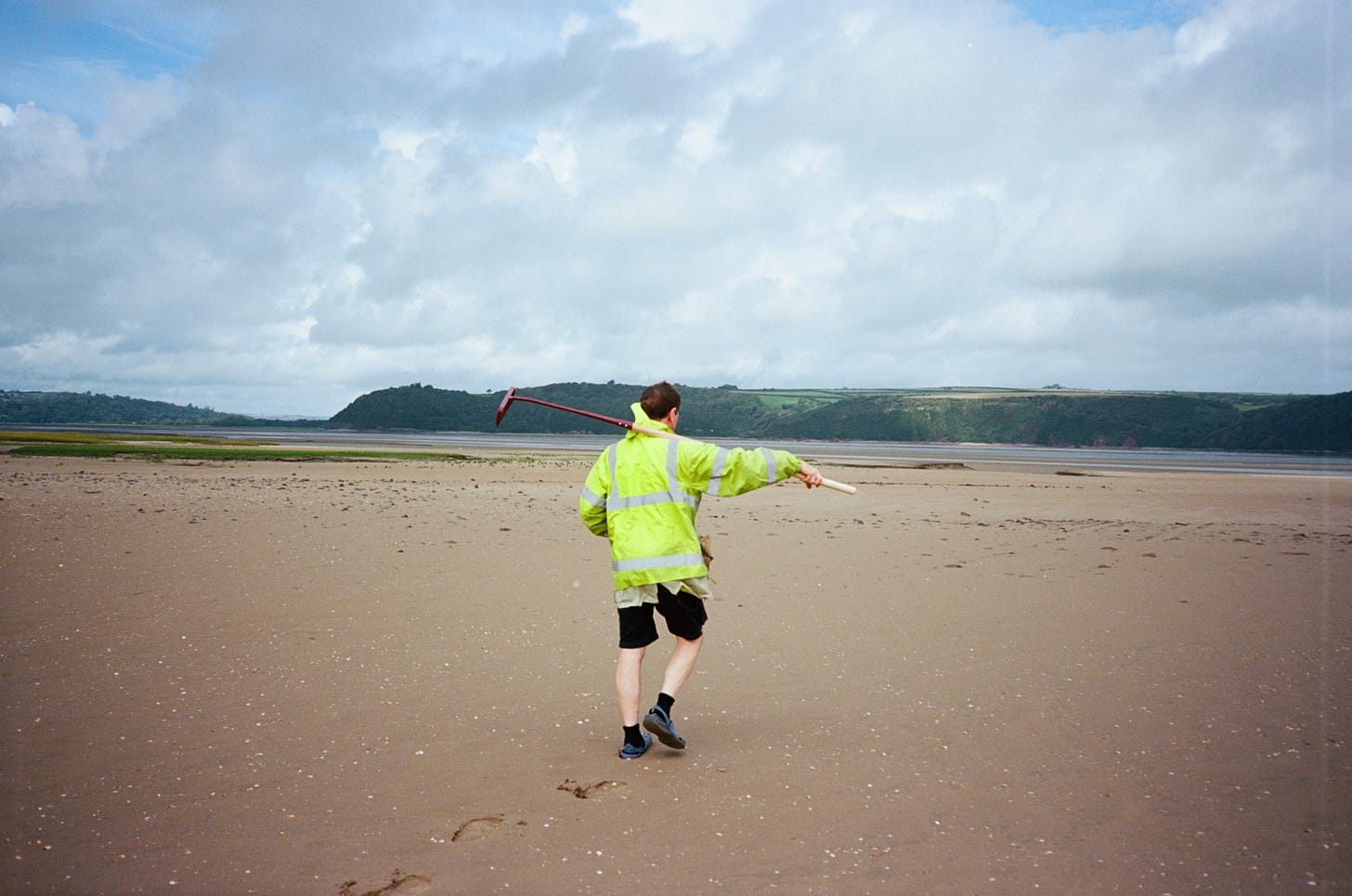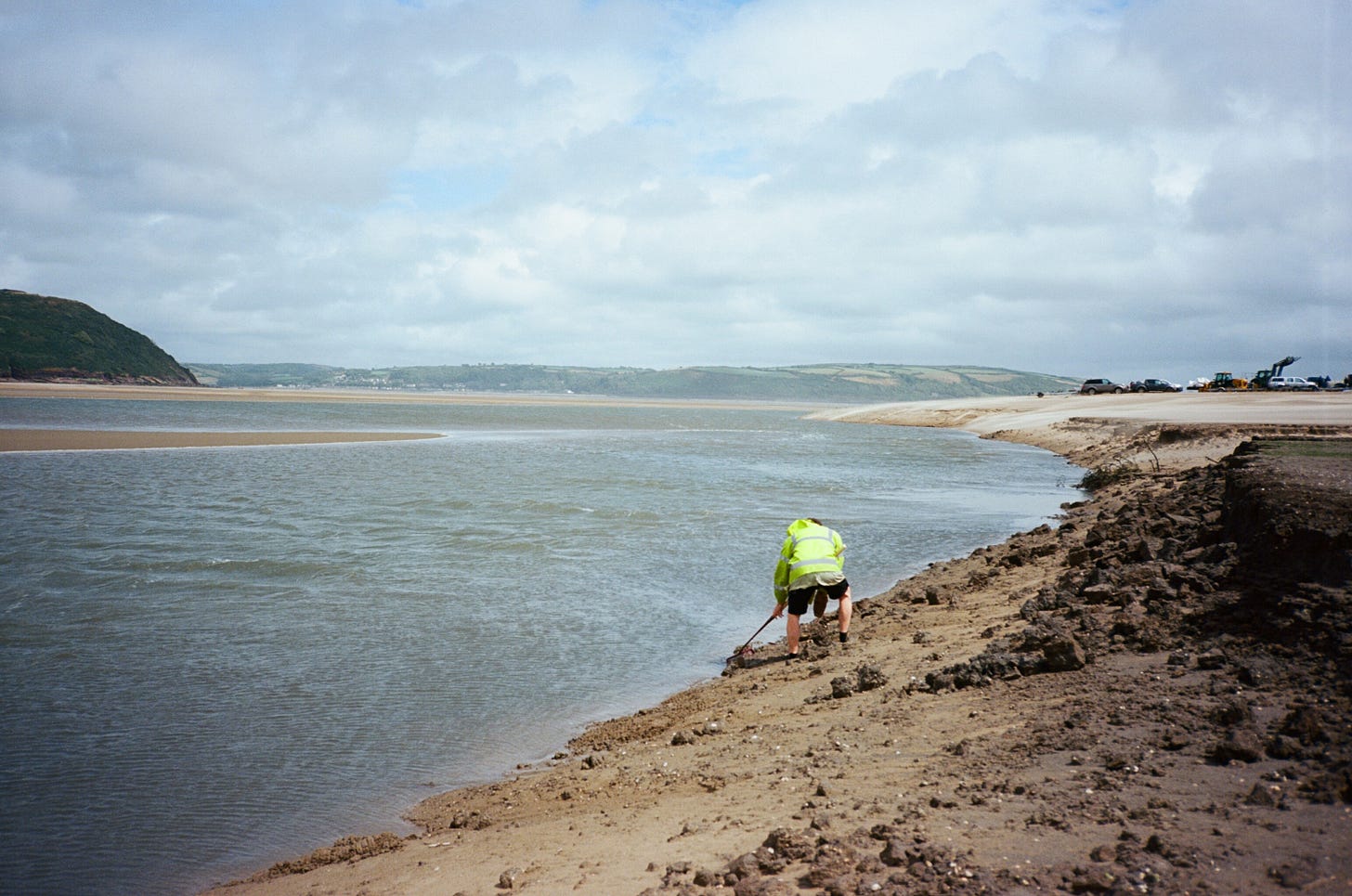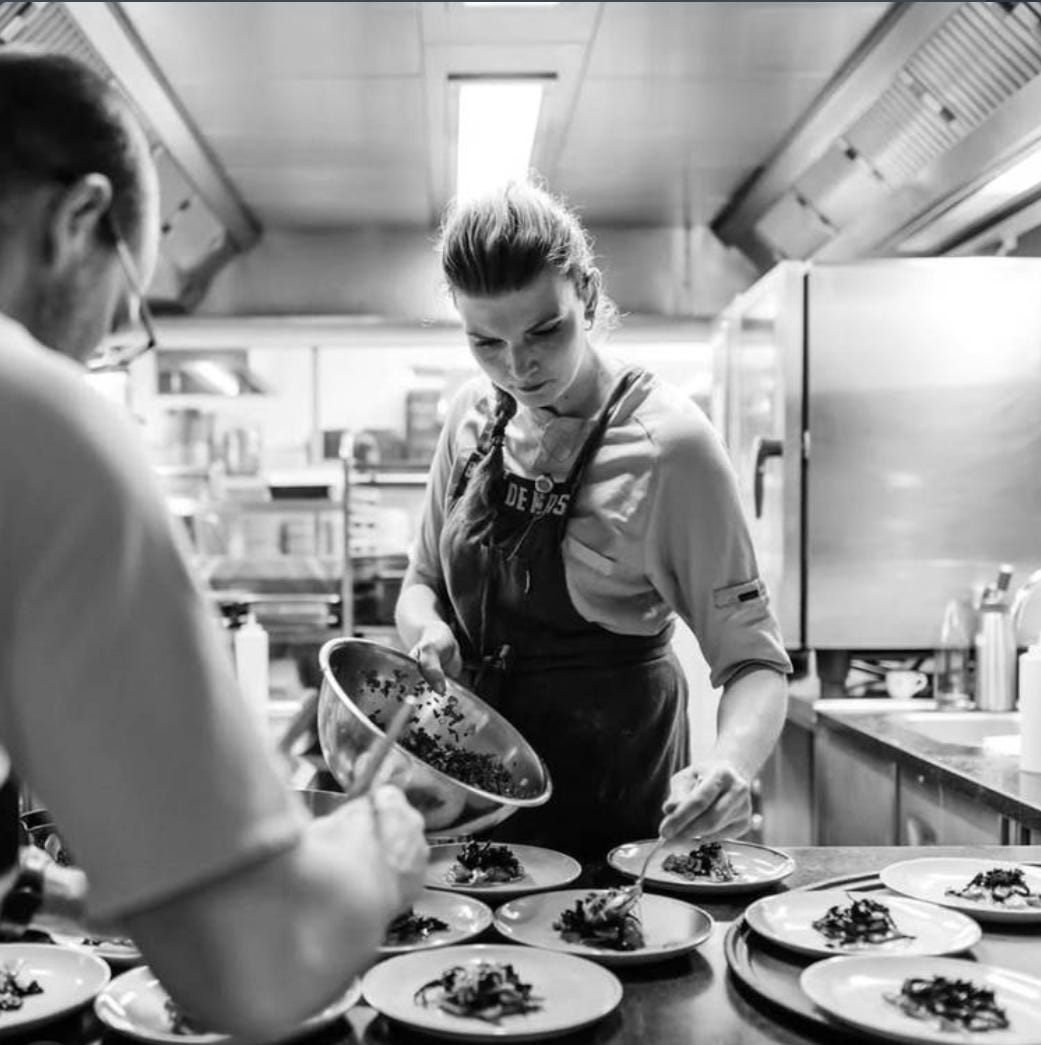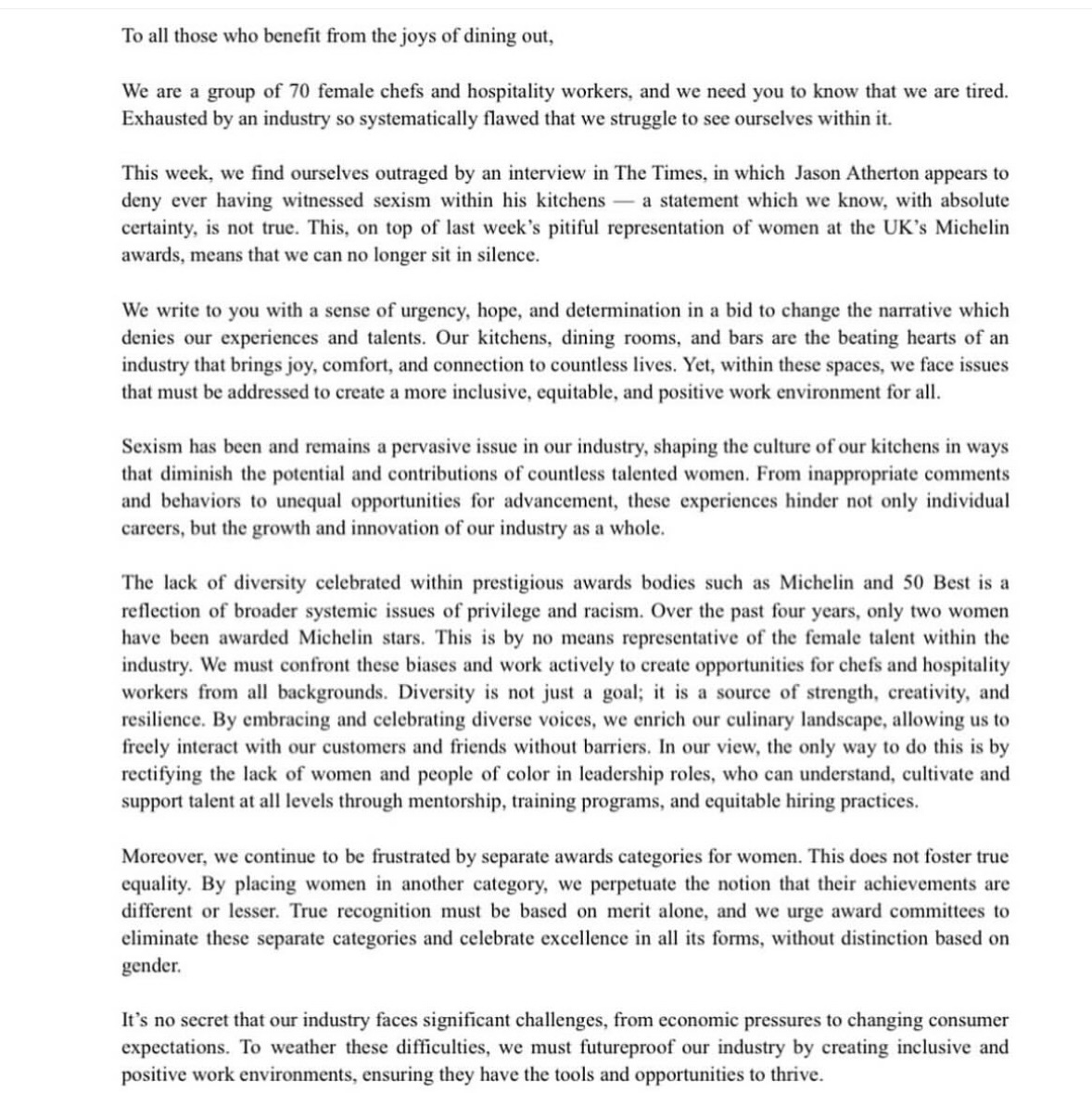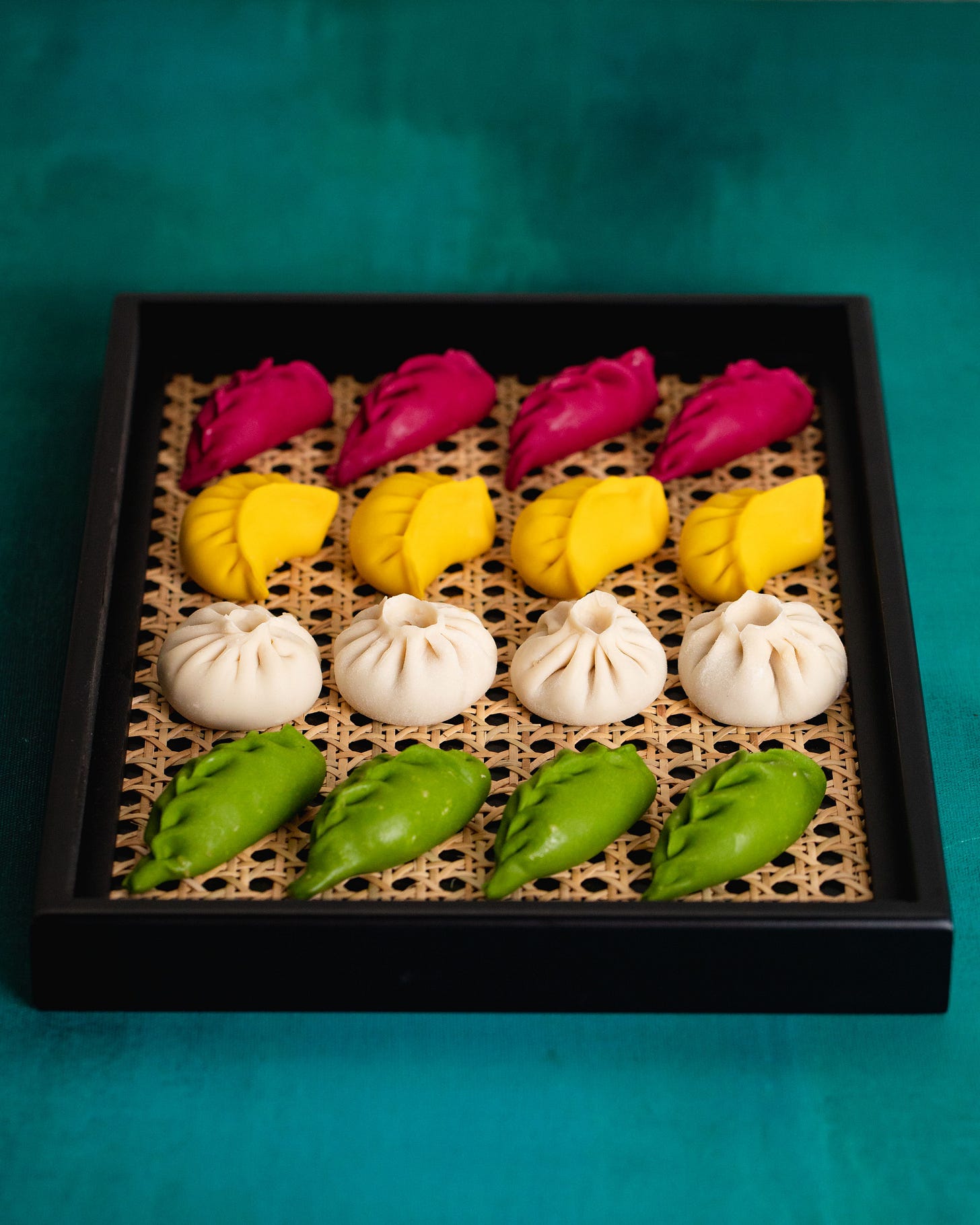Cockles, My Hometown and the Company Preserving Them
Writer Rhys Thomas returns to Wales to chart a nostalgic local delicacy's rise to some of London's best restaurants.
Words and photography: Rhys Thomas
You might not think about cockles often. Even if you like them. Even if you’re from an area surrounded with cockles, like me. A place where the rugby team are known as the cocklemen – even though women generally used to do the cockling -- and their badge contains a castle, a celtic cross, and a cockle; and the mayor wears a chain of gold-plated cockle shells around his neck.
For much of my life, I didn’t think about cockles either. Not even when I was living at home, Laugharne, on the south west coast of Wales, just on the border of Pembrokeshire. Laugharne is where Dylan Thomas (also my dad’s name) settled and was eventually buried. The drinker and poet writes about “web-footed cockle women” in Under Milk Wood, probably his most famous work, heavily inspired by the area.
Recently I’ve been thinking a lot about cockles. In part I do this because I’m at home less, but also because cockles are now popping up across desirable London restaurants with one-word names. Check the menus. Cockles and/or laverbread are everywhere and it’s making me homesick. I’ve had them with braised peas at Mountain’s Cadet pop-up, Lyle’s served them with laverbread and Brat serves them as part of its plaice ‘pil-pil.’
I never used to get cockles in restaurants at home, not a chance. If you’re getting them fresh anywhere, it might be a chippy. When I was a kid it might have been at a kiosk shop by the beach which also sold buckets and spades. They’ve closed down now. In these spots, a mound of cockles would fill a polystyrene cup like the ones you put mulled wine in at Christmas. These cockles would be doused in malt vinegar, a wooden fork shoved into them, and would set you back a couple quid.
Often, in the restaurants suddenly using produce from my hometown, you’re getting about a dozen cockles on the plate and it’s coming in at £18. Of course, it’s fucking delicious, and it hits different to the polystyrene cup. But neither of these are the cockle experience that I personally find myself craving. I’m used to having closer to a hundred in a serving, with some seaweed – well, a pulverised slop of seaweed called laverbread, made with the same seaweed as nori or sleabhac in Ireland – lardons, and toast. It’s a dish local to the area that nobody seems to eat.
I can get hundreds of fresh cockles because at home, I go and collect them myself. The cockles wash up at the edge of the tide on the estuary, just before it becomes a beach, though technically it’s all one and the same. The estuary is at the end of the beach a few minutes from my dad’s house. I rake them out of the sand, rinse them in the sea water, and take them home to eat. Hundreds of them, for free. Fresh as you like, from one of the best spots for cockles there is. Dad comes with me sometimes too. When I head down to do it, I’m reminded that this is what George and Lennie kept rabbiting on about in Of Mice and Men, and they were right. Living off the fat of the land absolutely bangs.
Of course, these places serving cockles are cooking in ways I cannot, and representation of local produce on the big stage is a special, emotional thing to see when I glance down the menus. Being served a fresh cockle in the shell has only ever happened to me at my house or in fine dining spots in London although, granted, a few are catching on at home now too, hopefully.
In London, you’ll be hard-pressed to find cockles that you can cook up at home. But there is a saving grace, an anti-sickness remedy, if you don’t mind blending food and vomit in the same sentence. A brand called Parsons, who pickle cockles right from my ends in a light brine and sell them in glass jars. I’ve even seen them in the bigger Tesco Express on Bethnal Green Road.
“It all started in Laugharne in 1947” says Colin Macdonald, Managing Director of Parsons pickles for the last 18 years. “Back then it was mainly cockles and silverskin onions. The brand grew and grew. We're now the only brand of pickled cockles in the UK. We do cockles, mussels, silverskin onions, and beetroot. And then the laverbread, which isn’t pickled. We’re the only company doing tinned laverbread too. We're thriving.” Colin says. Today the company employs about 30 people, which is 0.5% of the town. There’s also roughly 50 fishermen they help to keep going all year round too. The cockles are bought by weight from them. The cockles are pickled to the recipe Lesley Parson created back in 1947, and they will not share it with anyone.
Pickled cockles thriving might sound odd, even less comprehensible than the Oritz tinned fish boom. But it’s true. Recent figures include 1.2 million tins of laverbread, and four million jars of cockles per year. There’s just over three million people in Wales. “It's funny because, you'd think cockles were an old person's delicacy. We thought we’d see a decline if anything. But it’s increasing every single year.”
The cockles are mainly from the coastline I call home, some are sourced further up the west Welsh coast, and the river Dee. They’re processed in Penclawdd, and then jarred in Burryport. The jars are made using a mould the company owns and has to replace every five years. It’s distinctive for the shellfish and seafood design embedded into the glass. “Lesley Parsons introduced these, they’re expensive, but we make sure to keep them going. People recycle them as pencil holders and other things.” Colin says.
Recently, I found myself home the day cockling season started. It was the day after a family funeral, and as a distraction I took my dad with me. On the huge, expansive beach which occupies a little pocket on the coast between Llansteffan beach and Pendine beach (which is eight miles long, they used to do land speed records there), is the area where we visit. If you time the tide right, you can walk across it all. We didn’t time it right, so we were limited to one part of the vast area. It didn’t matter one bit. We caught hundreds within half an hour.
Fishermen with 4x4s, speedboats, tractors and forklifts were also there, getting an even bigger yield that couldn’t be reached on foot. It was a very windy day, and the boats struggled in the swell. It looked like fucking hard work. They had tonnes upon tonnes of cockles, a quick back-of-a-napkin calculation I did suggests there are 125,000 cockles in a tonne bag. They rake them by hand. We had a couple kilos, far too many really, and took them home to eat in the way that signifies home. I de-shelled the rest and filled tupperware to give to mam and my sister, who live between Laugharne and Burryport, in a bigger town called Carmarthen. They ate them with a fork and a little vinegar.
The beauty of Parsons to me is that when I pop a jar open, I can smell the salty air and sea, and the briney plants and decay and slime of an estuary (if you’ve had jellied eels, you’ll know what I mean). I can taste and feel the gritty sand, the sweet tender meat of the marine bivalve mollusc. These jars don’t just give me cockles, they give me home. It’s surprising what a glass jar of seafood can do to you. Of course, I am a bit deep in the cockle game.
You might not think about cockles often. Let alone how they end up in a jar, out of their shell and pickled in a simple brine. Nor how the jar has ornamental cockle shells on it, nor where the castle on the lid is, nor whether it’s even real, or why there’s a castle at all.
We often take food for granted, even when we’re appreciating it – biting into it, feeling textures and letting flavours roll around our tongue – we don’t think about the people who are out there, waiting for the tide to leave, harvesting millions of cockles by hand until the tide comes back in. We don’t even think about the ornamental jars as much as we should, nor the pickle recipe, nor where the produce comes from. But we should.
You might have a food or ingredient local to you that you feel the same about. That’s important. Produce is important. And these niche companies pickling and churning niche produce into jars and tins are very important. They are the preservation of a culture, of a history, of a way of life.
Fortunately, this is a happy story. Parsons is thriving. In the future, they might start working with live cockles, supplying them to restaurants and supermarkets. “The cockles on the south west coast of Wales are some of the best in the world, they’re at least as good as Spanish cockles, maybe even better” Colin says. I know this all too well, and I hope the word spreads. It’d be nice to have a bit of home with me more frequently.
SLOP NEWS
De Kas collaboration with Firebird
On the 8th March, internationally renowned De Kas will be winging their way from Amsterdam to Soho for a one night collaboration at Firebird. Co-founders Anna Dolgushina and Madina Kazhimova are taking their ‘Firebird & Friends’ series international by welcoming head chef Savannah Hagendijk, who will be bringing De Kas’ highly acclaimed dishes across the North Sea to the heart of Soho, London, in her first ever international pop-up.
Tickets are priced at £75 and available via Firebird.
Over 70 chefs sign an open letter to address sexism in the food industry
By far the most important news this week has been an open letter signed by more than 70 chefs calling on the restaurant industry to come to terms with sexism and open a conversation around wider cultural practices in hospitality. It has come in the wake of comments by Jason Atherton claiming to have not seen any sexism in the industry as well as yet another year of female chefs being overlooked for Michelin Stars with only 6% of restaurants holding stars are led by women. What started as a Whatsapp group started by Sally Abé has grown into an open letter spearheaded by Abé, Dara Klein and Poppy O’Toole, which is available to sign here
Fatt Pundit Holi-inspired momo
From the 12th to the 16th March, Fatt Pundit is reintroducing its colourful Momos in celebration of Holi the Hindu Spring Festival. These Nepalese dumplings are coloured with beetroot, spinach and saffron, reflecting the colours of the festival. Available at Soho and Covent Garden restaurants.
Angus Kitchin x Close Ties
Fresh off Chap Bistro, his one man mega residency, Angus Kitchen is collaborating with the party people at Close Ties. Returning to Shoreditch Arts Club, they’ll be serving up Moet alongside a great selection of wines from Newcomer. Running until 3am with £5 tickets on the door and no reservations, it’s one not to miss.




